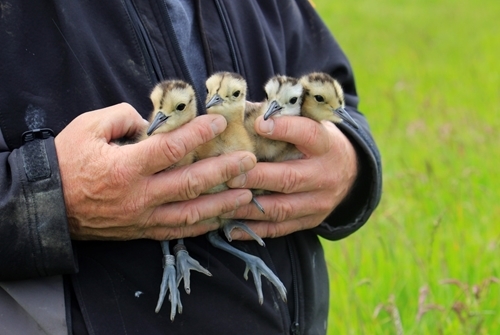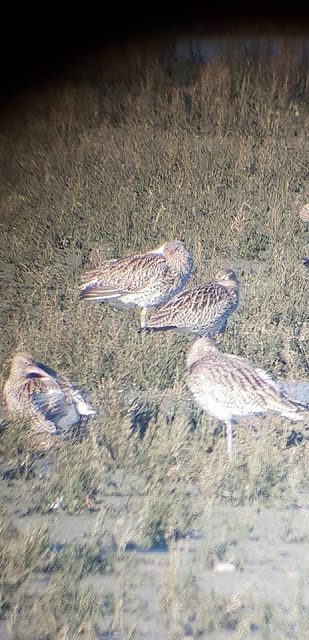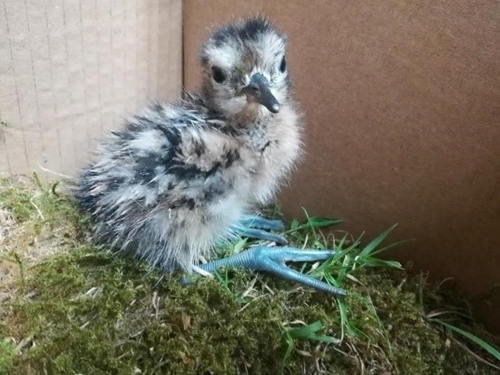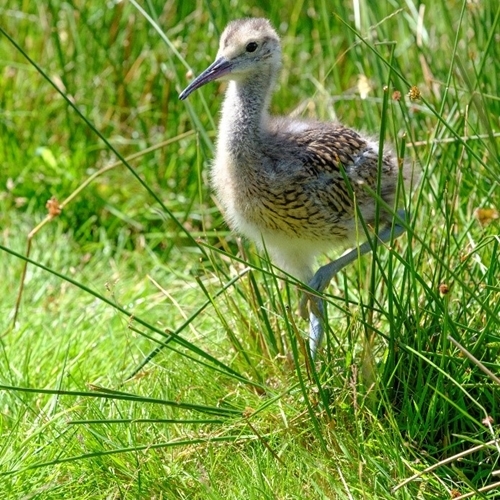
The GWCT is a partner in the Curlew Country project
Following a mild winter, the first sightings of curlew within the UK Lowland Recovery Project (Curlew Country) area, have been reported since early February. This year the first sighting, which would usually have stirred some excitement among the small project team has been trumped by a more important and exciting sighting. One of the 21 chicks reared by the project and released back into the natural environment at fledging stage, has been spotted on the Hayle estuary in Cornwall.
At a recent meeting, project ornithologist Tony Cross commented that he was pleased to note that it was not with a group of Amandabers – it was the Project Assistant, Amber and I who reared the chicks – but foraging naturally with other curlews in this winter roost.

In 2018 the project focused on collecting eggs from natural nests, incubating the eggs and rearing the chicks. Curlew Country is the first project in the UK to do this under a licence obtained from Natural England and over the last 2 years has released 27 chicks back into the Shropshire landscape. We had been keen to have a report of a chick and still need to learn what, if any the impact of rearing and releasing chicks in such a way will be on those chicks. Losses in the first year of life are high for these waders and then most do not return to their breeding areas for two years when they are mature enough to breed.

Headstarting, the process of incubating and rearing chicks, is a desperate measure to save a population from becoming extinct. In its four years of work, the project has established conclusively what needs to be done now to save curlew now. Working with a farm business manager we have been assessing the real costs to farmers of supporting breeding curlew.
This is particularly relevant when a crop is cut but a family of curlew are within it and unable to be located and removed. The current agri-environment schemes are not delivering the right support. Our findings are being collated and sent onto policy makers, but any new scheme might not come into effect quickly enough to save farmland curlew.
Then there is predation control. After the first two years of the scheme when no chicks hatched due to predation, it was incredibly uplifting to see some chicks hatch from areas in which we had trialled traditional fox control and fencing nests.
Agri-environment support for farmers and predation control for curlew survival are costly and stir political debate. Predation control is a long-standing problem for some. Right now, we just need good predation control to save curlews. The dramatic and depressing results from our 2 years of nest monitoring, captured on camera and reported as they unfolded, helped many people to understand the devastation caused by predators to our breeding waders.

Several large organisations have taken the view that curlew will only be saved on upland grouse moors and reserves. Other projects have had some success on lowland reserve areas. It is on our farmland, however, that curlews stir emotive memories among entire rural communities who are alarmed at the possibility of their demise. Farmers and land managers are desperately keen to try and help waders survive.
Properly funded efforts to support breeding waders will deliver a range of other environmental benefits as well. As an individual species, curlew may seem rather demanding, but in terms of the other environmental and social benefits that they can potentially deliver to a landscape and rural communities they offer fantastic value. We need to act now to save them.
Headstarting curlew is positive and exciting, but only a temporary measure until we can get the conditions on the ground right for curlew and all the additional environmental benefits that managing for them will bring.
Curlew Country is fundraising to be able to continue its vital work in 2019.
To ensure Curlew Country’s work continues in 2019, visit the appeal here:
Donate Now >>